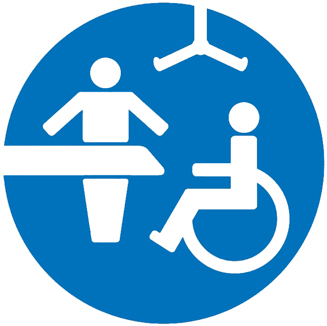

What's in a name?
A discussion about types of toilet provision.
The Changing Places consortium is currently working with many campaigners across the UK who are highlighting the need for Changing Places in all large public venues and places. Providers, developers and local authorities are often restrained as to what they can offer regarding toilet provision. This is sometimes due to financial constraints, sometimes due to available space (especially in a refurbishment) but sometimes it is due to lack of understanding of the need to provide different types of toilets for different groups of people within a population.
Changing Places and standard accessible toilets.
Regardless of these restrictions Changing Places toilets are different to standard accessible toilets and have extra features and more space to meet different needs. Changing Places toilets should not replace standard accessible toilets.
Standard accessible loos are often referred to as “disabled toilets”. The term ‘accessible’ is preferred as it highlights the reason for the toilet, that it should be accessible to a disabled person and specifically a wheelchair user.
The main differences between a Changing Places toilet and a standard accessible toilet are:
the space: A British Standard Changing Places toilet is 12 square meters and is not for independent use.
the toilet: A Changing Places has a peninsular toilet with room either side for carers. A standard accessible toilet is situated in the corner to allow independent left or right transfer.
the equipment: A Changing Places has a bench and hoist which are not for independent use.
There is quite often a lot of learning and debate to be had by all parties involved when discussing the provision of a Changing Places toilet.
The Changing Places consortium is available to support campaigners and developers through the process of providing Changing Places.
The official sponsor of the Changing Places campaign is Aveso Ltd. Aveso hope that its support for the campaign will help it achieve its target of 1000 registered Changing Places toilets within the next three years.



 FAQ
FAQ
 Share
Share